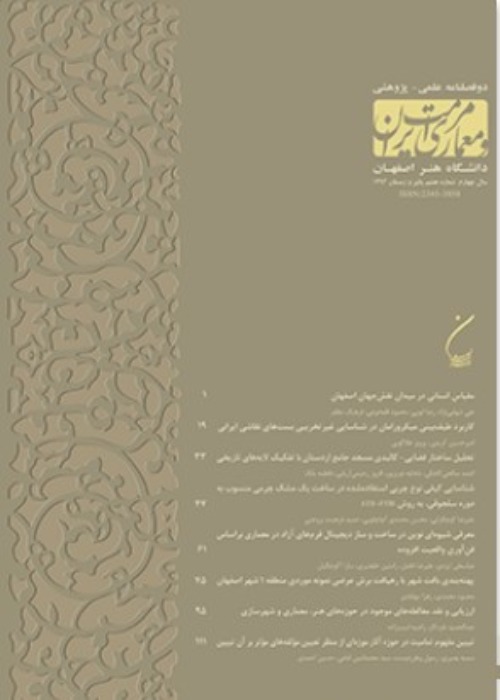Assessing the Application of Titanium Dioxide (TiO2) Nanoparticles in the Resistance Improvement of Polyvinyl Butyral (PVB) Consolidant against the Wood White-Rot Fungus
Author(s):
Abstract:
The synthetic polymers are widely used as adhesives, consolidants and protective coatings in the conservation of historic relics. Although, compared to the natural polymers and adhesives, these materials present a better resistance against the microorganisms, most synthetic polymers remain appropriate sources of Carbon and energy for the growth of microorganism; in addition, the relics consolidated with these materials will still remain vulnerable to the microorganisms and fungi, leading to a sort of degradation whose progress will, nonetheless, be accelerated with the environmental factors and ultraviolet light. Therefore, preventing the microorganism from attacking the relics, as well as increasing their impact resistance against the environmental conditions are necessary. In this study, in order to maintain the antifungal properties in PolyVinyl Butyral (PVB), TiO2 nanoparticles were employed; anatase-type TiO2 nanoparticles were used in PVB to prepare the nanocomposites. Also, the Samples were made of Poplar wood (Populus spp.) in accord with the Bravery guidelines, treated by the Titanium Dioxide nanocomposite under vacuum conditions. Afterwards the samples were separately affected in the dark and under the daylight conditions by the wood white-rot fungi (Trametes versicolor) as a deterioration active, for the duration of seven weeks. The treated and untreated samples were placed under the accelerated aging condition (temperature, humidity and UV light). The results indicate that the wood samples treated with 1% of Nano-TiO2 (0.4g) in 5% PVB, placed in the dark, did not have any antifungal effect, while the amount of 2% (0.8g) could protect the wood against the white-rot fungus degradation in the darkness conditions. The inoculated samples with the amounts of 1%and 2% of Nano-Ti2O, in the light conditions, could also create antifungal properties in the treated samples with nanocomposite, and protected the wood against the white-rot fungus. The accelerated aging of the treated samples with consolidant without nanoparticles of Ti2O and the treated ones with nanocomposite under the heat, humidity and UV light conditions demonstrates that the treated samples were protected against the degradation, ultraviolet light and the environmental conditions.
Keywords:
Language:
Persian
Published:
Maremat & memari-e Iran, Volume:6 Issue: 12, 2017
Pages:
1 to 12
magiran.com/p1661250
دانلود و مطالعه متن این مقاله با یکی از روشهای زیر امکان پذیر است:
اشتراک شخصی
با عضویت و پرداخت آنلاین حق اشتراک یکساله به مبلغ 1,390,000ريال میتوانید 70 عنوان مطلب دانلود کنید!
اشتراک سازمانی
به کتابخانه دانشگاه یا محل کار خود پیشنهاد کنید تا اشتراک سازمانی این پایگاه را برای دسترسی نامحدود همه کاربران به متن مطالب تهیه نمایند!
توجه!
- حق عضویت دریافتی صرف حمایت از نشریات عضو و نگهداری، تکمیل و توسعه مگیران میشود.
- پرداخت حق اشتراک و دانلود مقالات اجازه بازنشر آن در سایر رسانههای چاپی و دیجیتال را به کاربر نمیدهد.
In order to view content subscription is required
Personal subscription
Subscribe magiran.com for 70 € euros via PayPal and download 70 articles during a year.
Organization subscription
Please contact us to subscribe your university or library for unlimited access!



